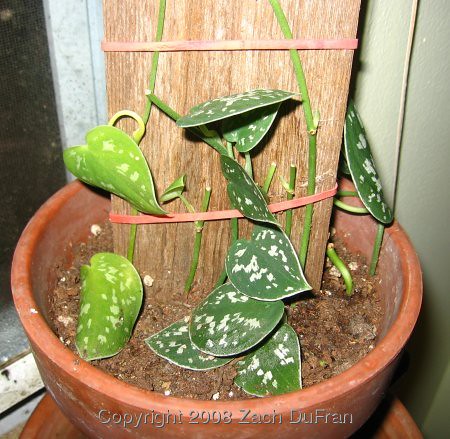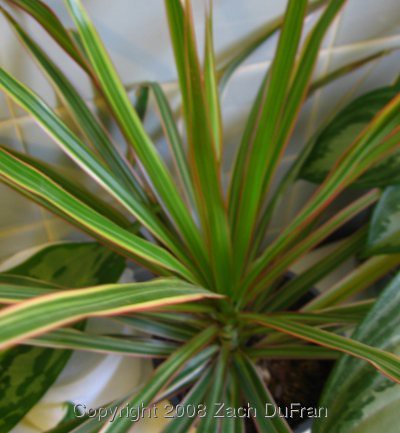There aren't a lot of great places to buy plants in my hometown of Norman, OK. But I found a gem (actually 2 gems!) in northern Oklahoma City - just a 40 minute drive from home. TLC Florist and Greenhouses has 2 locations in northern Oklahoma City and is everything I want in a plant store.
I first visited the north-central (Edmond) location in November and then visited the NW OKC location in early January. The Edmond location is much larger, and has a wider selection of plants. However, I found that the NW OKC location has plants in much more affordable sizes. There were some really great Aglaonemas (specifically the species Lilliput) at the Edmond location that were in large pots and cost $35 a piece. At the NW location they had some in 4" pots for $5! I'm all about the experience of watching the plant grow. Besides, I already don't have enough room in my house for all my plants. So the 4" size suited me well on all levels.
According to their website, TLC has been ranked in the top 100 of US Garden Centers for the past 12 years straight! In addition to having high quality plants, they do a local Saturday morning TV show on Gardening during the Spring. I haven't seen it before, but I plan on tuning in some Saturday morning this Spring, now that I know it exists. They also do free seminars on the weekends during the Spring and Summer. They have posted the schedule to their website, for anyone in the central Oklahoma area who might be interested.
I took some pictures and posted the photo album here. Enjoy!
Of course, I didn't walk away from TLC empty handed. I bought 5 plants:
To see my plants, look at the photo album. The pictures below the break are the plants that I purchased.
I first visited the north-central (Edmond) location in November and then visited the NW OKC location in early January. The Edmond location is much larger, and has a wider selection of plants. However, I found that the NW OKC location has plants in much more affordable sizes. There were some really great Aglaonemas (specifically the species Lilliput) at the Edmond location that were in large pots and cost $35 a piece. At the NW location they had some in 4" pots for $5! I'm all about the experience of watching the plant grow. Besides, I already don't have enough room in my house for all my plants. So the 4" size suited me well on all levels.
According to their website, TLC has been ranked in the top 100 of US Garden Centers for the past 12 years straight! In addition to having high quality plants, they do a local Saturday morning TV show on Gardening during the Spring. I haven't seen it before, but I plan on tuning in some Saturday morning this Spring, now that I know it exists. They also do free seminars on the weekends during the Spring and Summer. They have posted the schedule to their website, for anyone in the central Oklahoma area who might be interested.
I took some pictures and posted the photo album here. Enjoy!
Of course, I didn't walk away from TLC empty handed. I bought 5 plants:
- Aglaonema 'lilliput' - This is a very attractive Aglaonema with lance-shaped leaves that are curly like those of 'Royal Ripple' and splotched in a unique variegation.
- Aglaonema NOID - I'm not sure what this one is and it could quite possibly be a species I already have in my collection. But at the price of $5, I couldn't pass up the opportunity to add another Aglaonema.
- Philodendron 'Rojo' - This is a beautiful self-heading Philodendron with deep purple, red and green leaves. The leaves are thick and waxy like the burgundy rubber plant (Ficus elastica 'Burgundy'). TLC had some really large plants that were way beyond my budget. But they also some medium sized plants that were very healthy and pretty affordable.
- Ctenanthe lubbersiana - These plants were literally bursting out of their pots. I recognized them as being in the same family as Stromanthe, Calathea and Maranta - the Prayer Plants. The leaves of this plant are light green with broad streaks of yellowy-white. The plants weren't marked but I was happy to see the price was minimal when I got to the checkout counter. I have since divided and repotted this plants into two plants that look almost as large as the original. How is that possible?
- Platycerium bifurcatum (Staghorn Fern) - I have admired these plants for quite a while, but I have always seen HUGE specimens. I was really excited when I saw this small specimen in a 4" pot. I'm looking forward to mounting him on bark this summer and watching him take off. Maybe I will even hang him from the Magnolia tree in my backyard. I always see this hanging from trees, it seems.
To see my plants, look at the photo album. The pictures below the break are the plants that I purchased.



















